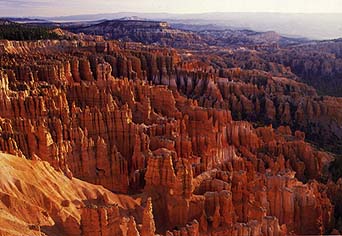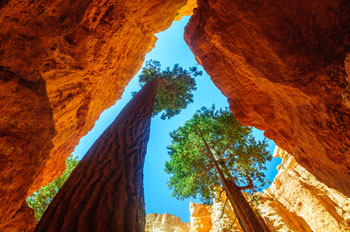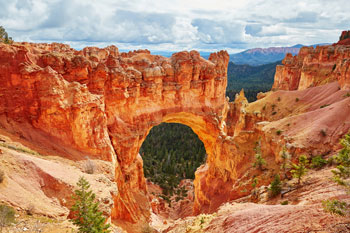This article may include affiliate links. If you click a link and make a purchase, Utah Outdoor Activities may receive a small commission at no extra cost to you. We only recommend products or services we personally use. FTC Affiliate Disclosure.
At Bryce Canyon National Park, erosion has shaped colorful Claron limestones, sandstones, and mudstones into thousands of spires, fins, pinnacles, and mazes. Collectively called "hoodoos," these colorful and whimsical formations stand in horseshoe-shaped amphitheaters along the eastern edge of the Paunsaugunt Plateau in Southern Utah.

Little is known of the native American inhabitants of the park area prior to Mormon pioneer settlement. Limited archeological studies indicate that this area was used primarily for hunting with most habitation in the river valleys below. Trips to the plateau were limited to harvesting its forest resources, including wild game. Later settlers continued this seasonal use.
Bryce Canyon National Park is named for pioneer Ebenezer Bryce who came to the Paria Valley with his family in 1875. He was sent by the Church of Jesus Christ of Latter-Day Saints because his skill as a carpenter would be useful in settling this area. Bryce built a road to the plateau top to retrieve firewood and timber. He also built an irrigation canal to raise crops and animals. Local people called the canyon with the strange rock formations near Ebenezer's home "Bryce's Canyon". The Bryces moved to Arizona in 1880, the name remained.

As southern Utah developed, Reuben and Minnie Syrett--who homesteaded just outside the present park boundaries--brought their friends to see the intricately eroded stone formations. By popular demand, they developed sleeping and eating facilities on the canyon rim. They called their establishment, "Tourist's Rest." When the area was set aside as a national monument in 1923, the Union Pacific Railroad bought out the Syrett's interests and began to construct Bryce Canyon Lodge intending to make the Bryce Canyon area part of their new "Loop Tour" of the southwest. The Syrett's then built "Ruby's Inn" on their own land just north of the park.
Interest in the area continued to grow after the declaration of the new national monument. The Union Pacific continued to improved facilities in the area. They improved transportation into Cedar City and started a shuttle service from the train depot there to Bryce Canyon National Monument. In 1924, Bryce Canyon National Monument was declared Utah National Park. The Bryce Canyon Lodge was finished in the same year. In 1925, the Union Pacific continued to expand the Bryce Canyon Lodge, due to the overwhelming popularity of the area.
Bryce Canyon Lodge still serves park visitors. This National Historic Landmark has been renovated to provide modern safety and conveniences, while maintaining the character of the 1930's.In 1928 an act of congress increased the amount of protected land to double what was already protected by the new national park. This addition of land was accompanied by another name change. Bryce Canyon National Park was officially designated on February 25, 1928.
More Information:

Bryce Canyon National Park
PO Box 640201
Bryce, UT 84764-0201
Visitor Information: (435) 834-5322
Campground Information and Reservations:
North Campground – Bryce Canyon National Park
Sunset Campground – Bryce Canyon National Park
Nearby Hotels and Lodging (Affiliate Links)
Additional Information: https://www.nps.gov/brca/index.htm
We hope you enjoyed this information. For more outdoor activities, please connect with us on YouTube, Facebook and Instagram. Help us keep this site up and running by visiting our online store which features outdoor themed gifts, decor and more. Thank you for visiting and for your ongoing support!